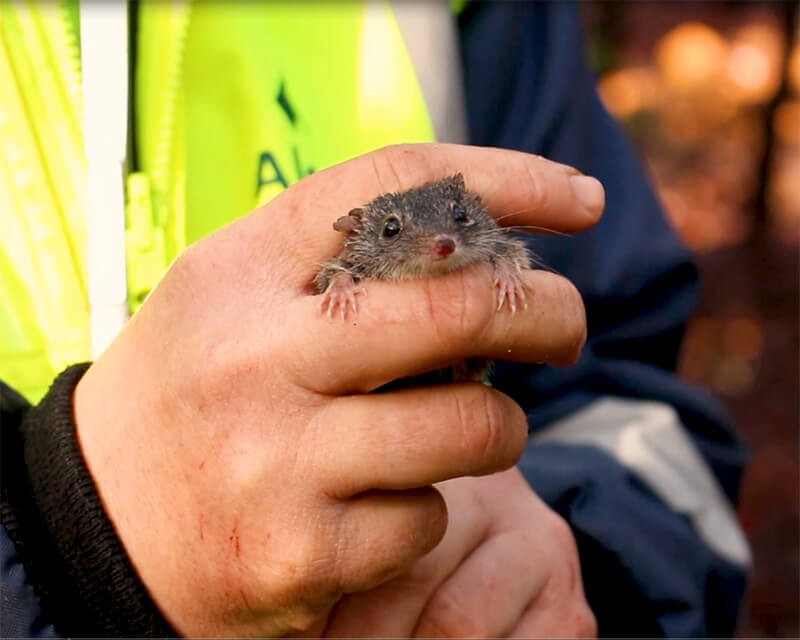August 02, 2023
Monitoring shows diverse fauna return to rehabilitated forest

Ongoing fauna monitoring in rehabilitated areas at Alcoa’s Huntly Bauxite Mine in Western Australia has yielded positive results indicating that a diverse range of mammals, birds and reptiles continue to return, including several threatened species.
Alcoa Biodiversity Specialist Dr Justine Barker said research indicated that, compared to surrounding unmined forest, 100 per cent of mammals, 90 per cent of birds and 89 per cent of reptiles had returned to rehabilitated areas within 12 to 15 years.
Please enable targeting cookies to watch videos. You can enable targeting cookies on our Cookie Policy page.
“During recent monitoring several mammals including chuditch, quenda, mardo, honey possums and dunnarts were seen, as well as reptile species such as different skinks and larger lizards including bobtails and racehorse goannas,” Dr Barker said.
Fauna monitoring is an important measure to determine if rehabilitated areas provide the required habitats to support the same fauna species as unmined jarrah forest.
Dr Barker said the range of data collected from the animals provided valuable information on species composition and abundance.
“We’ve done numerous research projects over the years investigating how different fauna groups use rehabilitation,” Dr Barker said.
“One study investigated how chuditch use the constructed habitats in rehabilitation areas. These are human-made structures of logs, stumps and rocks intended to provide shelter and den sites for a range of species.”
“It is really encouraging to find that they are digging burrows, including for denning underneath rocks and habitat piles in our rehabilitation areas.”
Dr Barker said multiple safe trapping methods were used to target different species across rehabilitation areas of various ages, ranging from five to more than 15 years.
“Research is a significant component of our work, and we regularly undertake projects, both inhouse and in collaboration with external organisations, to effectively mitigate any impacts we may have on fauna species to ensure their conservation.”